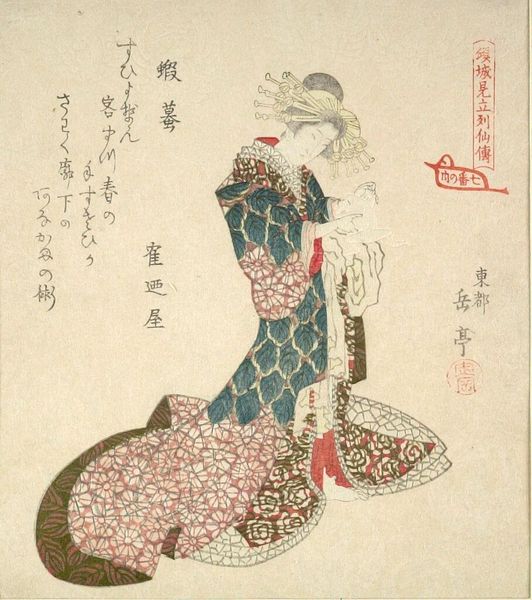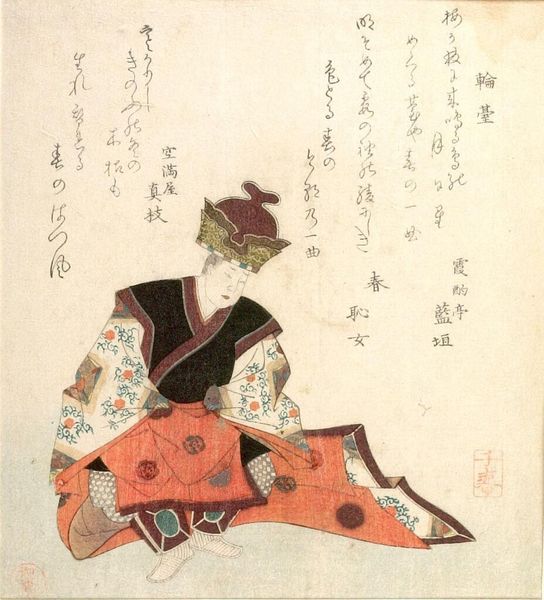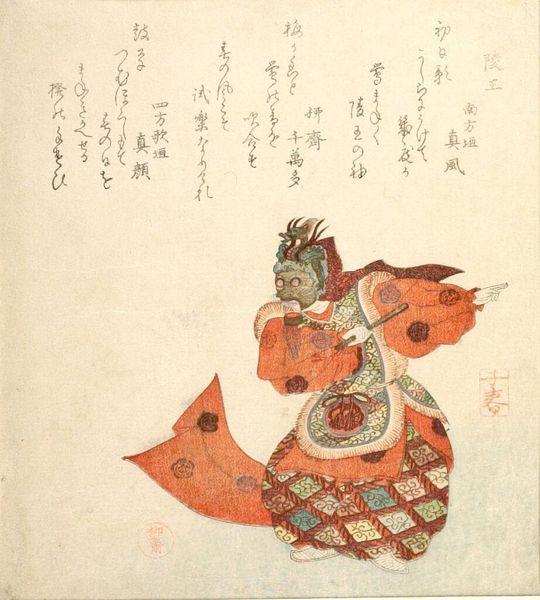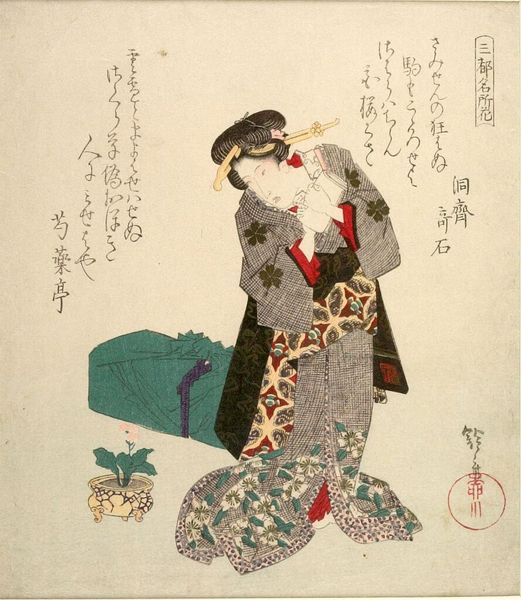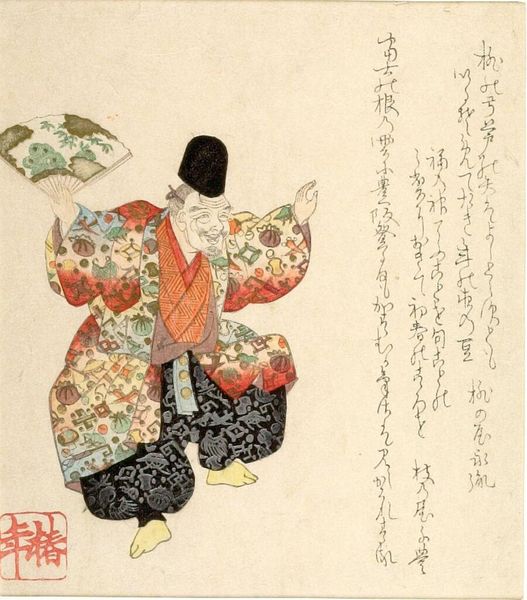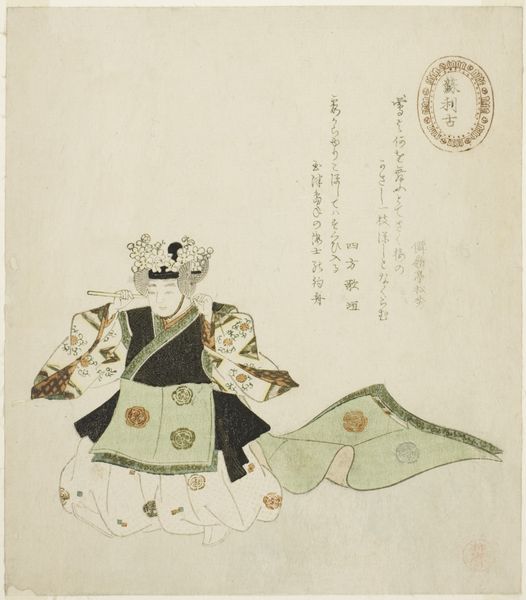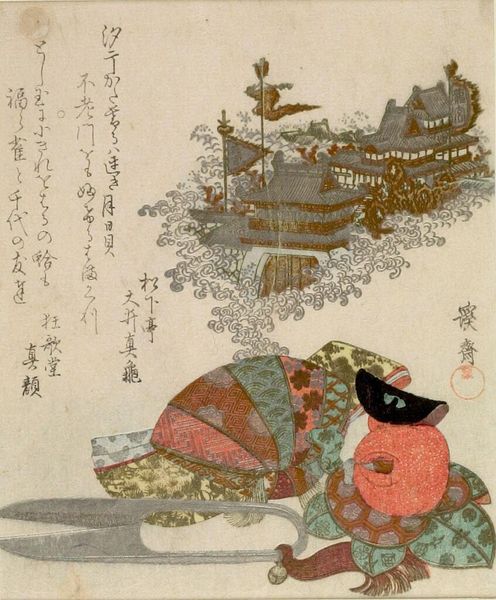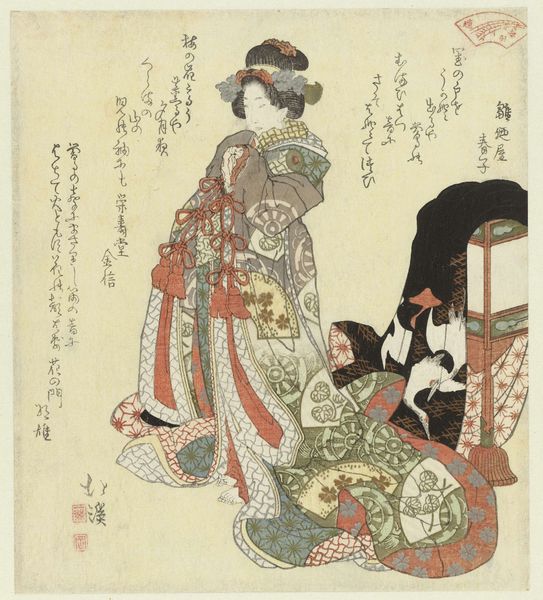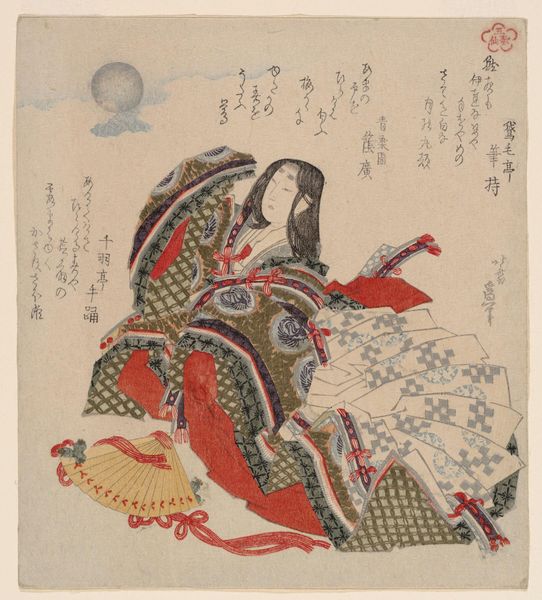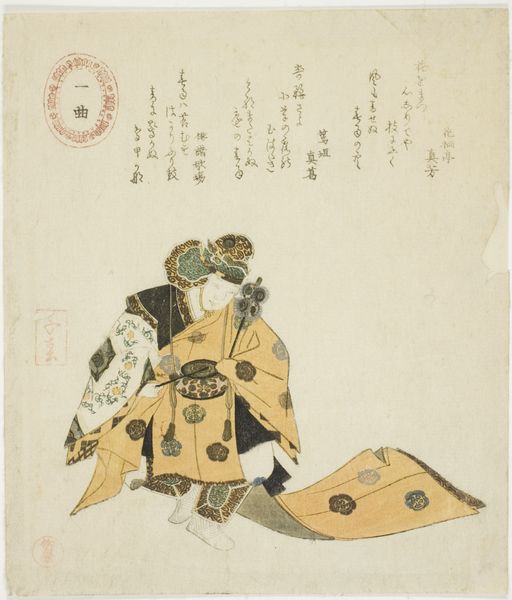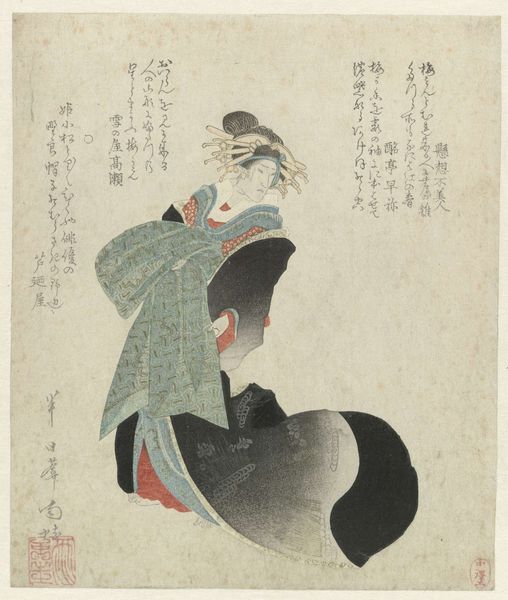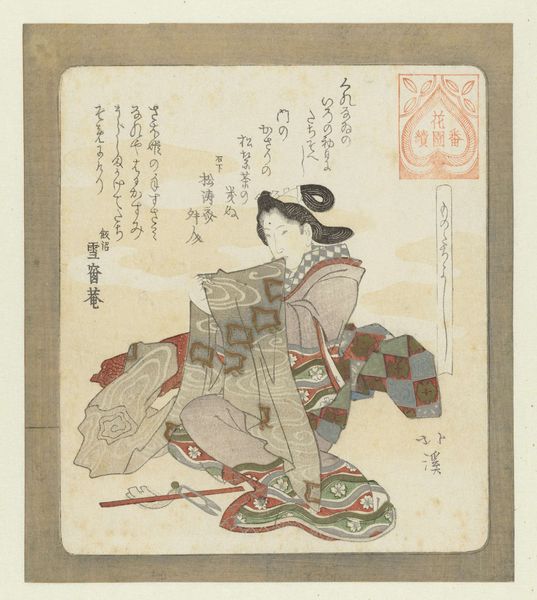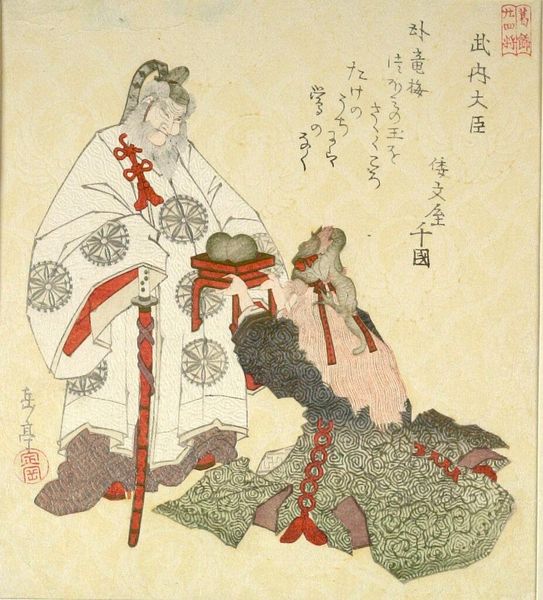
The Bugaku Dance Ayakiri c. 18 - 19
Dimensions: Shikishiban
Copyright: CC0 1.0
Curator: This is Takashima Chiharu's "The Bugaku Dance Ayakiri," a shikishiban print from around the late 18th or early 19th century. Editor: It's beautiful, a kind of quiet elegance. The pale greens and creams give it such a soft, almost ethereal feel. Curator: The choice of depicting a Bugaku dance is quite telling, Bugaku being traditionally performed by men in the imperial court, with deep connections to ritual and power. Editor: The figure almost seems to be bowing, head lowered in deference. There's a stillness that feels very deliberate. I wonder about the relationship between the dancer and the symbols of authority they are embodying. Curator: Exactly. The dance itself is a performance of power, but also of cultural identity, reinforcing societal norms. The text inscribed above also adds layers of meaning, it refers to the poetry associated with traditional dances, linking aesthetic expression with cultural legacy. Editor: It makes you think about who gets to perform, who gets to represent tradition, and what it means to embody those roles. Curator: Indeed, and that's precisely why Chiharu's print continues to resonate today, as it offers a lens through which we can view both historical and contemporary performances of identity. Editor: It's a fascinating intersection of art, history, and, most importantly, the human experience, presented in the most delicate of ways.
Comments
No comments
Be the first to comment and join the conversation on the ultimate creative platform.
